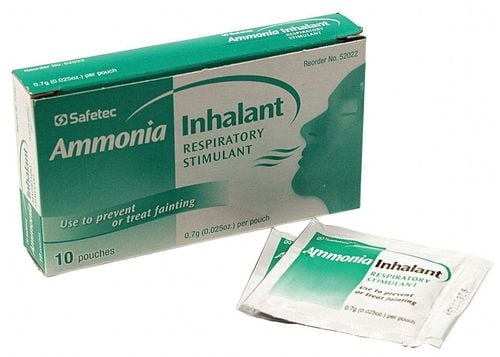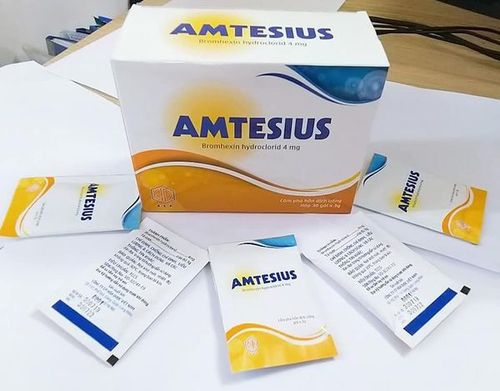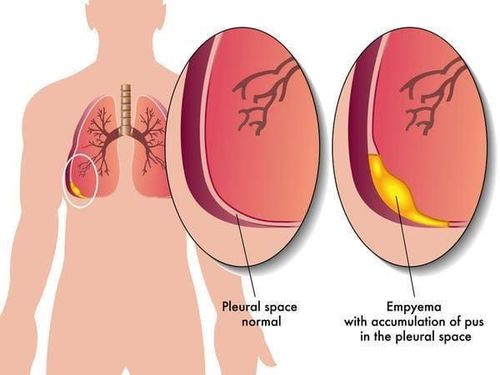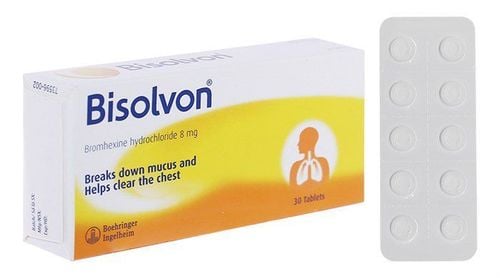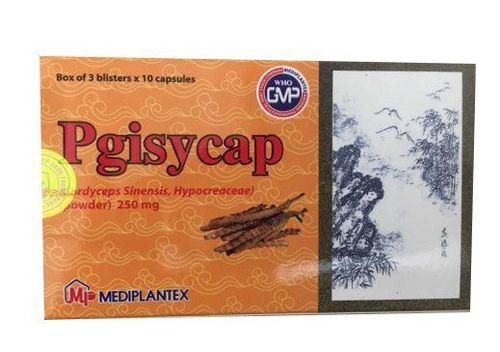This is an automatically translated article.
Posted by Master, Doctor Le Xuan Thiep - Radiologist - Radiology Department - Vinmec Ha Long International Hospital
1. What is hemoptysis?
Coughing up blood is blood from the lower respiratory tract that goes out through the mouth when coughing. This is a common symptom in respiratory diseases. The disease tends to recur if not treated thoroughly.
1.1. Mechanism of coughing up blood
Due to ulcers, broken blood vessels in the respiratory tract: ruptured aneurysms, bronchiectasis, Lung cancer ... Due to increased blood pressure, increased vascular permeability: hemodynamic pulmonary edema, damaged pulmonary edema... Injury to the bronchial capillary membrane: Good Pasture syndrome. Blood clotting disorders, bleeding. Coughing up blood can occur with exertion and emotion.
1.2 Symptoms of coughing up blood
Coughing up blood causes the patient to feel a burning sensation behind the breastbone, itchy throat, fishy mouth or fainting. Spitting up bright red, foamy blood, which may be pure blood or blood mixed with sputum. Hemoptysis is a sign of stopping bleeding. It is common in patients with pulmonary tuberculosis: spitting up less blood, dark red, then black.
Ho ra máu có thể khiến ngưởi bệnh mệt xỉu
2. How is hemoptysis diagnosed?
2.1 Clinical diagnosis
Circumstances where coughing up blood occurs: exertion, emotion... Cough, chest pain, feeling sore throat Bright red blood mixed with foam or phlegm. Passing normal stools (may be black stools if the amount is large, leading to swallowing blood sputum).
2.2 Paraclinical tests
X-ray shows opacities (usually apical lung), CT scan: solidified lesions, containing blood or blood in the bronchial lumen.
alkaline pH: cough fluid has an alkaline pH (vomiting blood: acidic pH).
Classification of the degree of hemoptysis:
Coughing up blood at a low level: Coughing up small patches of sputum mixed with blood, total blood volume <50ml. Moderate hemoptysis: The total amount of coughed blood is 50-200ml. Blood pressure is normal, pulse is fast, no respiratory failure. Severe hemoptysis: Coughing blood volume >200ml/time or 600ml/24h, respiratory failure, heart failure. Coughing blood of lightning: Occurs suddenly, blood flows in a large volume, flooding the lungs, causing suffocation and death.
3. How to treat hemoptysis?
Treatment of hemoptysis will depend on the cause of the disease as follows:
Tuberculosis : treatment according to anti-tuberculosis regimen. Lung cancer: chemotherapy, targeted therapy, radiation or surgery. Pneumonia: antibiotics, anti-inflammatory... Bronchiectasis: prevention of pneumonia... Cardiovascular disease: treatment according to each cause... In addition, other causes such as trauma or pulmonary hemangioma disease The patient will undergo surgery as directed by the doctor.
4. Treatments for hemoptysis
The most important treatment for hemoptysis is emergency treatment to stop bleeding and limit blood loss. Treatment methods:
Medical: hemostatic drugs Hemostasis by bronchoscopy. Bronchial artery embolization surgery. Accordingly, the medical treatment method is the treatment with oral and injectable hemostatic bandages.
5. Hemostasis by bronchoscopy
Is a method of using local hemostatic drugs by inserting an endoscope into the bleeding site and applying hemostatic drugs at the bleeding point.
This method has many limitations and is not very effective because sometimes it is difficult to see the bleeding site and the source of bleeding may be from the lobules... Local hemostatic drugs are sometimes ineffective in this case. excessive bleeding.
6. Surgical treatment of hemoptysis
Surgery to remove a lobe of the lung, a lobe of the lung, or an entire lung. This is a radical but invasive treatment method and difficult to apply in case of bleeding from both lungs.
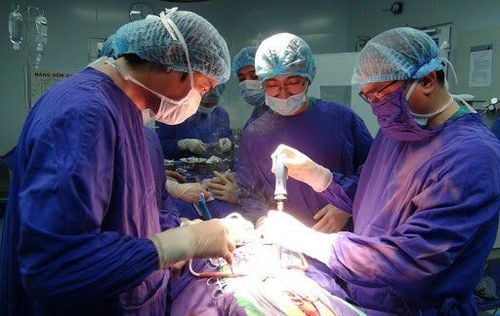
Phẫu thuật là một trong những phương pháp điều trị ho ra máu
7. Treatment of hemoptysis with bronchial artery embolization
Treatment of hemoptysis with bronchial artery embolization is a hemostatic method to prevent acute bleeding in cases of acute hemoptysis by bronchial branch embolization under DSA guidance.
7.1 Surgical materials
Material of granule plugs: PVA, embospheres, embozene... bio-glue, coils... depending on the cause of the hemoptysis, the size and location of the bronchial artery damage.
7.2. Indications for surgery
Indications for the treatment of hemoptysis with bronchial artery embolization in patients who cough up blood at lightning strikes. Treatment of acute hemoptysis with blood loss ≥ 240ml/24h. Or >100ml/24h for ≥3 consecutive days or active bleeding foci (on CT scanner)
Clinical examination: coughing up bright red blood, rapidly developing symptoms.
7.3. How to proceed?
Step 1: After being diagnosed and indicated for arterial hemostasis by bronchial artery embolization, the patient will be taken to the angiography room (DSA). Step 2: Disinfection opens the way to the inguinal artery. Step 3: Insert the instrument into the artery and check the bronchial arteries on both sides, find the bleeding site. Note: the bronchial artery has many anatomical variations, sometimes the bleeding branch can originate from the subclavian or intercostal arteries. Step 4: Compare the location of the contrast leak on the DSA with the lesion on the X-ray and CT scanner. Locate and branch the bleeding lesion. Step 5: Inject embolization agent to completely block the damaged artery branch. Step 6: Take a scan of the node that fits the node and other possible locations of bleeding branches. Withdraw the instrument and close the artery, and secure with compression.
8. Pros and cons of treating hemoptysis with bronchial artery embolization (BAE)
The biggest advantage of treating hemoptysis by bronchial artery embolization is as follows:
It is a simple technique and quick to stop bleeding (patients can stop coughing up blood as soon as embolizing agents are injected) . Less invasive, less blood loss from the procedure (3-5ml). Clinical symptoms improved rapidly after treatment. Low cost compared to surgery, short recovery time after the procedure. Can be done multiple times. The only disadvantage of this technique is the need to project X-rays on the patient.
Normally, the process of hemostasis by bronchial artery embolization takes about 45 -60 minutes. In some cases, it can last 2 to 3 hours due to variations in the bronchial artery, small bleeding branches, and many different branches that cause bleeding.
Coughing up blood is a common dangerous clinical symptom and has a high mortality rate (even within a few hours). Drug hemostasis is sometimes not very effective, while endoscopic and surgical hemostasis is sometimes very limited and takes a long time. Bronchial artery embolization is a new method and is being widely applied. With many large centers, this is the first method for hemostasis in the case of hemoptysis. Quick and effective symptom improvement, minimally invasive. Sometimes BAE is the only treatment option for cases of hemoptysis that are difficult or impossible to treat surgically.
If there are signs of coughing up blood, the patient should go to the hospital to have a doctor diagnose and evaluate the disease, thereby deciding on a specific treatment method. Vinmec International General Hospital System is a prestigious hospital for many years in the examination, diagnosis and treatment of respiratory diseases. With a system of modern facilities and a team of highly qualified and experienced doctors, patients can rest assured when receiving medical treatment here.
Customers wishing to register for examination and consultation at Vinmec, please book an examination HERE.




